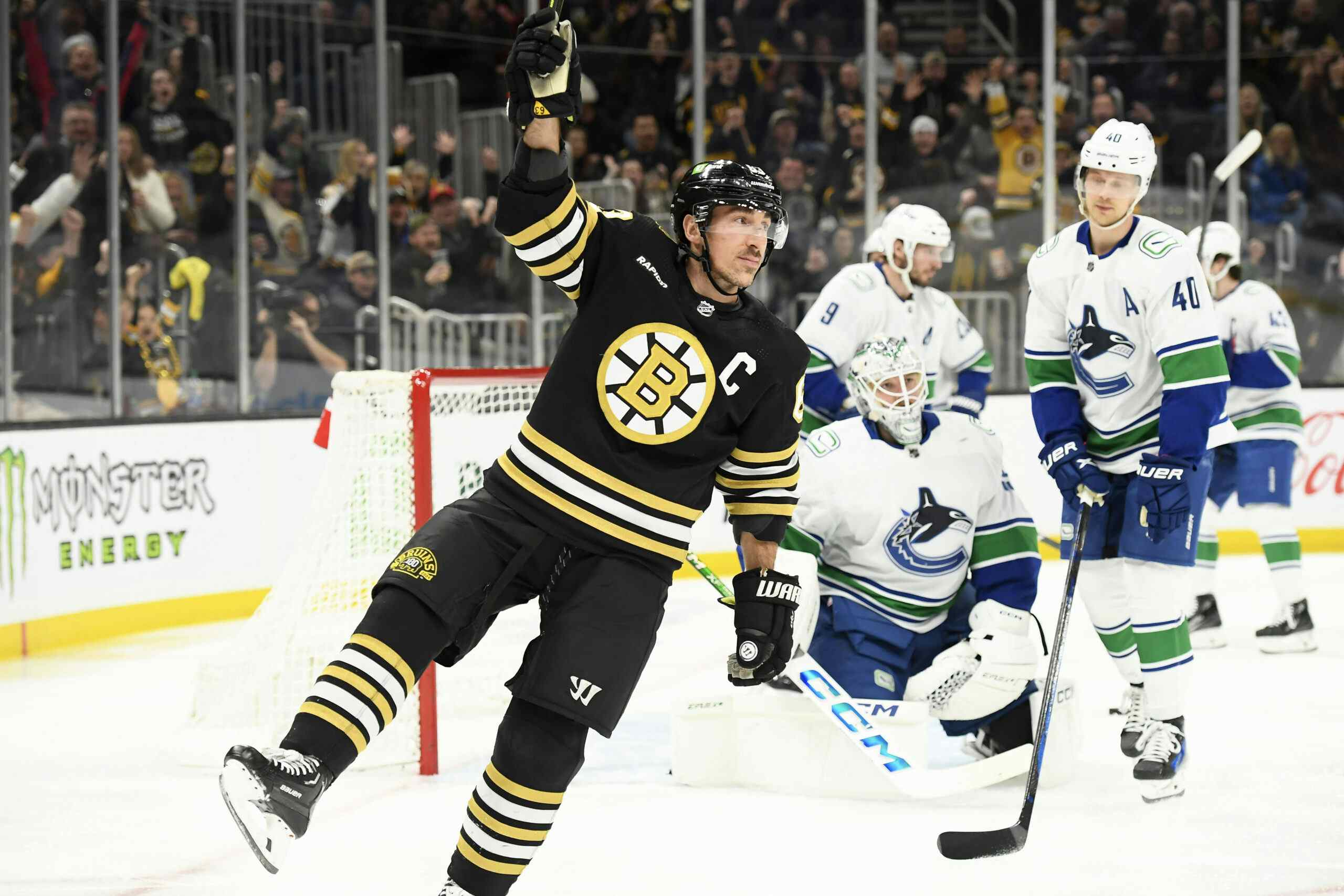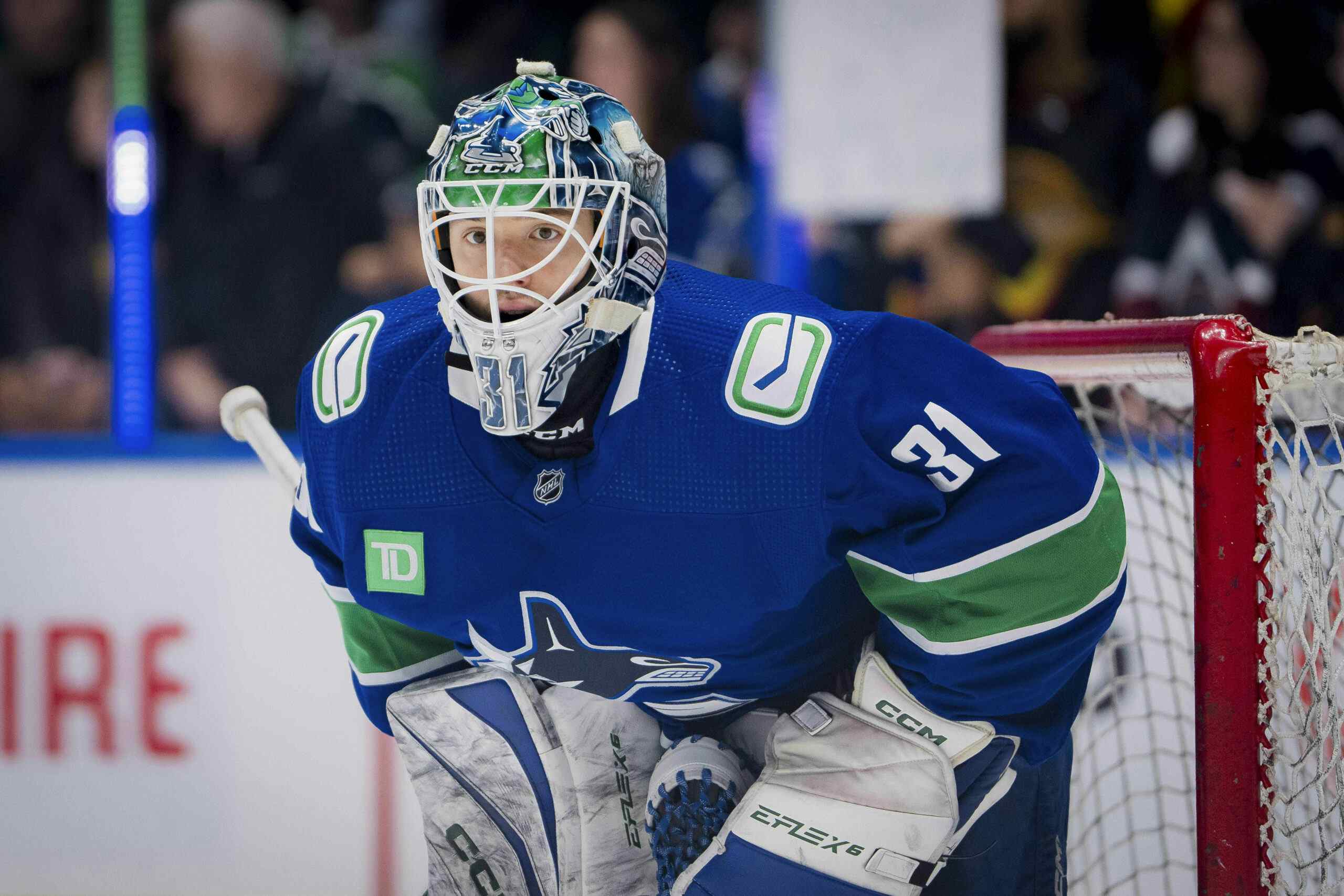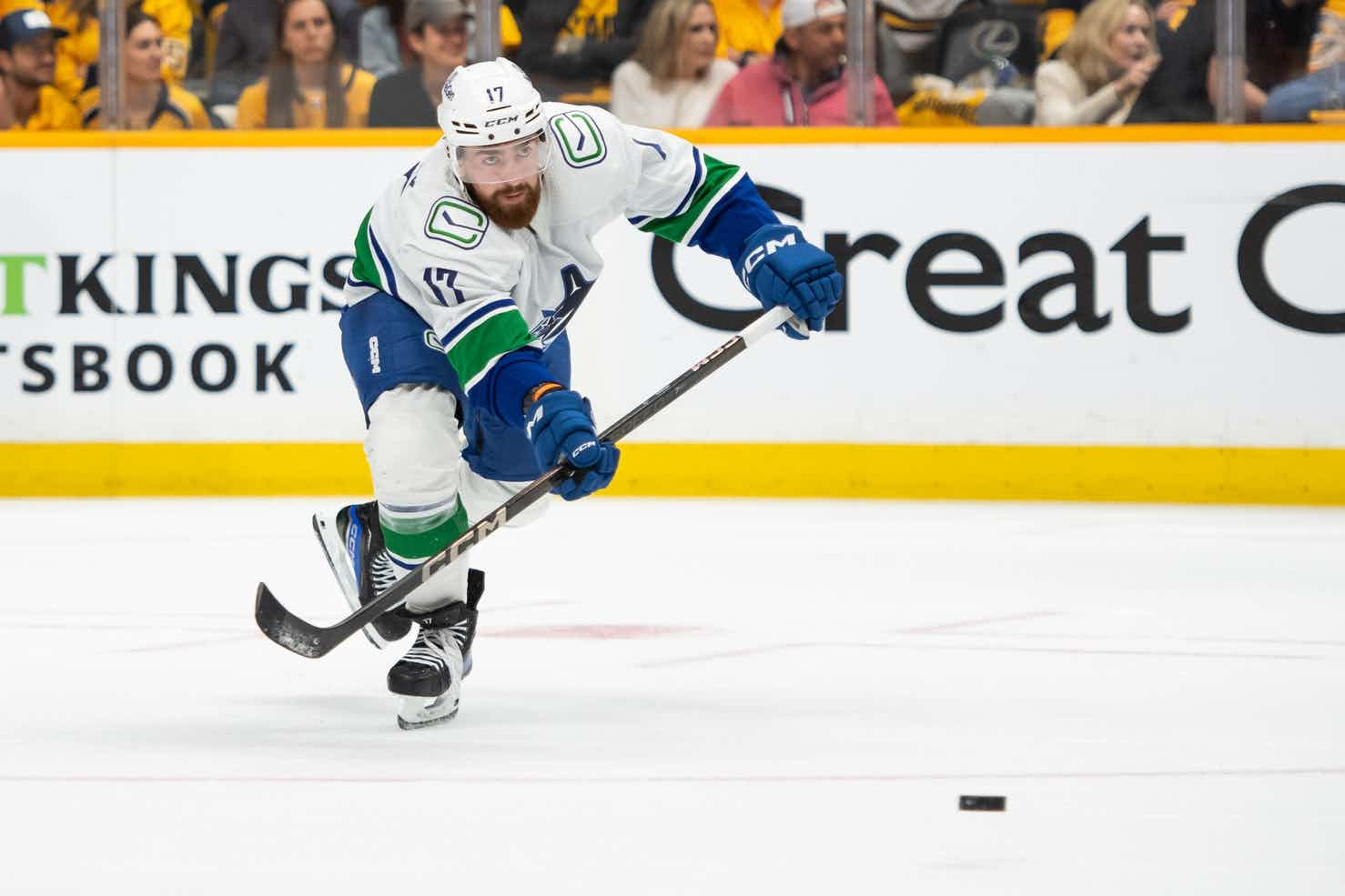The Canucks Should Look To Acquire More Draft Picks
7 years ago
It’s clear that the Canucks are intent on competing for the playoffs while also acquiring and developing young talent for the future. What’s less clear, at times, is which of the two takes priority over the other. Since even the most optimistic of prognosticators wouldn’t describe the Canucks as a “win-now” team, I’d imagine it would have to be the latter.
It’s obvious that the Canucks aren’t going to tank in the hopes of landing an elite talent like Nolan Patrick, so if all goes according to plan they’ll likely be picking somewhere in the middle of each round as they continue to build what they believe will be the core of a team that can one day compete for the Stanley Cup. It’s not the most streamlined or efficient plan of attack, but it’s a justifiable one given how uncertain the Aquillini family seems to be about the financial viability of a full-scale rebuild.
Since the Canucks don’t intend on picking early in the first round at any of the forthcoming NHL drafts, they’ll have to acquire elite talent by being a better-than-average team at drafting in the middle of the pack. There’s two ways they can accomplish this. The first is to maximize the value of each of their picks by picking the best player available, and the second is to increase the amount of shots they get at the dart board by acquiring additional draft picks. Jim Benning’s scouting history speaks for itself, and thus far I’d say the organization is doing a reasonable job of accomplishing the first point, so I’d like to focus on the second.
Historically, teams with the greatest amount of draft picks have always come away with the largest amount of NHL-calibre talent. Intuitively, this makes sense. The draft is essentially a lottery, and having more picks equals having more tickets. You can’t win if you don’t buy a ticket, and the more tickets you have, the more chances you have to win, so to speak.

Earlier this year, Sean Tierney of HockeyGraphs.com created this wonderful chart showing the correlation between the amount of draft picks a team has and how many players they acquired via the draft who played at least 100 games in the NHL. Yes, that’s Vancouver at the very bottom and yes, you should feel bad.
Between 2002 and 2012, only the Panthers and the Thrashers/Jets came to the draft with an above average amount of picks and came away with a significantly below-average yield. With few exceptions, the teams with the most picks came away with the most players.
This may seem obvious, but it’s still worth noting in today’s age of increased emphasis on amateur scouting. No matter how good your scouting department is, there’s no better way to increase the amount of NHLers acquired at the draft than to load the chamber with as many bullets as you possibly can. The science of drafting is finicky at best, and very heavily influenced by luck. If given an average amount of picks, a competent NHL scouting department should come away with an NHL player or two in every draft class. If they increase their amount of picks by three or even two, it’s entirely within the realm of possibility for them to come away with an extra player every other year.
The Chicago Blackhawks are a perfect example of this. In spite of selecting a number of less-than-impressive players in the first round like Anton Babchuck, Cam Barker, and Jack Skille, they were still able to build a modern dynasty because they just had so many picks. They were able to get away with their fair share of whiffs in the first round because they still managed to snag players like Duncan Keith and Niklas Hjalmersson later in the draft. Some of that is just good talent assessment by the Blackhawks’ scouting department, but some of it is luck, too. It’s clear that good fortune contributed to the Blackhawks success at the draft table when you consider that they snagged an elite defenseman in Dustin Byfuglien in a round that doesn’t even exist anymore.
As far as the Canucks are concerned, increasing the total number of picks they have in their arsenal may be the single best way to beat conventional wisdom and build a strong core of prospects while still remaining competitive. Unfortunately, they haven’t really done so thus far. They came into the 2016 draft with only 6 picks, with most of those picks coming in the fifth round or later. They’ve also been reticent to accept picks as a return in the trades they’ve completed, opting instead to place bets on young, underachieving players on the NHL bubble. That hasn’t been an entirely fruitless endeavour, but given the influx of players in their early-to-mid-twenties like Baertschi, Granlund, Etem, and Gudbranson, I’d argue going that route is no longer necessary. When they have taken draft picks back in trades, it’s usually to replace a pick of their own, or it’s been dealt in a package deal to acquire NHL-ready talent.
The problem here is that the easiest way to acquire said picks is to trade away veteran players, something the Canucks have appeared reluctant- or unable- to do under Jim Benning. Based on what he’s done in his tenure here, Benning doesn’t appear particularly keen on trading away veteran players unless there’s a serious logjam at the position. If the Canucks really are serious about building for the future, that’s a tune Benning would be wise to change.
Thus far, Benning has, for whatever reason, neglected to recoup value on his expiring contracts. In some cases, there simply wasn’t a market for the players. Brad Richardson suffered an injury towards the end of the 2014-15 season, and the “garage sale seven”, as they were dubbed by the media, were unlikely to net any sort of return in the first place. A lack of foresight contributed to the Canucks’ inability to move Radim Vrbata, and to Benning’s credit, he was able to get a return for Eddie Lack and Kevin Bieksa during the 2015 offseason, preceding the final year of their respective contracts. That being said, the refusal to trade Shawn Matthias, a player they weren’t interested in re-signing, remains puzzling, especially when you consider that the Maple Leafs were able to get a fourth round pick for his services after a much less impressive stint than the one he had in Vancouver. There was a lot of discussion at the time surrounding the effect trading a player like Matthias would have on morale, but the truth is that everyone knew that team was not going to make a run, and concessions need to be made occasionally in the name of building for the future. The Canucks had an opportunity to net an asset or two, and they didn’t seize it.
The Canucks’ inability to get a return for Dan Hamhuis at the trade deadline has been discussed ad nauseam online so I won’t spent too much time re-hashing it here, but it remains a blemish on this management group’s record. The offers for Hamhuis may not have been what the team was expecting, but there’s still no reason to let such a moveable asset depreciate into nothing. Even if all the Canucks were able to land was a mid-round draft pick or two, we’ve seen what kind of effect adding a few extra picks can have on a team’s outlook for the future. If there’s one thing the Mike Gillis era ought to have taught Vancouverites, it’s that pride can bee a poor quality in a general manager. Considering Jim Benning’s scouting pedigree, the team’s complete inability to land even so much as a draft pick in return for Dan Hamhuis is a bitter pill to swallow.
That’s all in the past, though. Executives are capable of improvement, and if this team plays it’s cards right, there may be a couple of opportunities to make up for prior indiscretions in the near future. Ryan Miller and Alex Burrows both have contracts that expire at the end of this season, and with some creativity, both players could possibly help the Canucks recoup some assets, especially if the team is willing to eat salary. Looking ahead to 2018-19, the Canucks would be wise to look long and hard at trading Jannik Hansen, who’s signed to a very affordable contract and could be an attractive rental for a contender looking to add some speed and versatility to it’s middle six.
If this organization has one strength, it’s the scouting department. Jim Benning’s record in Vancouver has been spotty since he took the reigns in the summer of 2014, but it’s undeniable that the prospect pool looks much better now than it did when he arrived. By that token, it should be a no-brainer that the Canucks would be best served by playing to their strengths and accumulating as many picks as they possibly can. They’ve built a roster they think can help them achieve their short and mid-term goals, now they need to focus on accumulating the types of assets that can help them build a bright future. Acquiring some extra picks is the first step, but it has to be one they’re willing to take.





